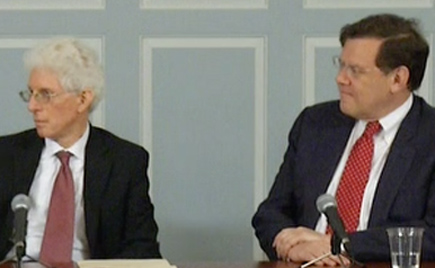What should be at the top of the next president’s agenda?

That was the question posed to an expert panel on Oct. 15 as the Miller Center launched The First Year: POTUS 2017.
Moderator Ann Compton, the former longtime White House correspondent for ABC News, gave the participants the opportunity to list three top agenda items. But Henry Olsen, a senior fellow at the Ethics and Public Policy Center, had only one on his list. In the first video excerpt, Olsen talks about the first thing the next president should do.
Olsen stressed that he would advise the next president to develop and define a strategy for U.S. involvement in the world. The United States needs to be able to articulate why the country is involved with world, how it wants to be involved, and with whom, Olsen argued. This strategy will provide a roadmap for the president’s foreign policy team as they plan for and respond to events.
The very nature of the presidency, especially during the crucial first year, is that it is hard to predict events. The president might believe that he or she is going to focus on one issue, such as immigration, only to be diverted by a crisis, such as the terrorist attacks on Sept. 11, 2001. Olsen’s advice to craft a strategy for world involvement helps the president be less reactive and more cohesive in how she or he deals with complex, unpredictable areas of the world such as the Middle East and Asia.
The panel also probed the sobering Washington reality that will likely greet the next president on Inauguration Day: Divided government.
In the second video excerpt, Olsen and William Galston, a deputy domestic policy advisor to President Bill Clinton, discuss the fact that no matter which party the next president represents, she or he may face a House and/or Senate controlled by different parties.
With divided government, Galston noted that there are only two options: gridlock or cooperation. If the next president is not willing to reach out to those on the other side of the aisle, gridlock is the inevitable result. If the president is able to find common ground with those in the other party, that cooperation will be the only way that the president and Congress will get legislation passed and signed.
This makes for a series of interesting thought exercises. How, for example, would Donald Trump reach out to Democrats? On what issues would he be willing to compromise to pass legislation? How might Carly Fiorina or Bernie Sanders change their approach to reach compromise? And which candidates are perfectly fine with gridlock?